We did not know that the small stretch of forest that bordered the trailhead parking lot was actually the gateway to another planet; thus my husband and I were unprepared for the vast, bare rock that suddenly stretched before us and up to the clouds beyond. Swirls of gray — the color of ash mingling with a bright, almost-white — met stone the beige of sand, with hints of faint, pale, rose-pink. The nearly smooth stone rippled gently in its gradual skyward ascent. I felt as though I had stepped from a parking lot in metro Atlanta onto the surface of a distant moon. Never before had I beheld such a landscape — Arabia Mountain, one of the granite outcrops of Georgia.
Granite outcrops formed in what is now the Southeastern United States more than 300 million years ago, by magma intruding into the existing rock and cooling. Over time, softer surrounding soils eroded and revealed flat rock islands or dome-shaped monadnocks. Though we call them “granite outcrops,” a more accurate description would be “granitoid rock.” While some outcrops are indeed granite, others are comprised of biotite gneiss1 or mica-schist. These outcrops exist in a handful of states — Virginia, North and South Carolina, Georgia, and Alabama — and nowhere else in the world. Ninety percent are in Georgia.
Bare rock is, unsurprisingly, inhospitable to most wildlife. Winter rainfall cannot permeate the solid stone; creating soggy conditions wherever runoff collects. Summer rains, however, quickly evaporate from rock that retains much more heat than surrounding soil. Few trees grow in the scant soil that collects in cracked stone; little to no shade provides shelter from the Southern sun.2 During this time, conditions on the hot, dry stone resemble that of a desert.
Between the wet winter and the scorching summer is a spring in which this stark landscape explodes into bloom.
Visit a granite outcrop right now, in April, and you will see a blaze of red and white burning above the stone. The red comes not from any flower but from the foliage of elf orpine, Sedum smallii. When my husband and I first hiked the Bradley Peak Trail at Davidson-Arabia Mountain Nature Preserve, we found tiny ruby orbs sprouting in the sand that lie in dish gardens — shallow depressions in the rock where sand, water, and seeds collect. What begins as droplets of red on the sand will grow to a short succulent plant — just a few inches tall — with stems and leaves entirely red. Elf orpine blooms in early spring, with flowers white and starlike.
Shallow pools dot the expanse of flat rock, like small mirrors reflecting the sky — circles of blue from which rise stalks of ruby beads beneath a banner of white stars.
Elf orpine is one of many plants adapted to the harsh landscape. Also blooming at this time is Piedmont sandwort (Mononeuria uniflora),3 miniature white cups on thread-thin stems that wave and flutter in the slightest breeze; sunnybells (Schoenolirion croceum), thin columns of tiny golden blooms; and flatrock pimpernel (Lindernia monticola), tiny trumpets of pale purple and white mixing with sedges. Soft, long leaves like rabbit ears stand among stems crowned with bright yellow daisy-like blooms — woolly ragwort (Packera tomentosa).4
A rare plant grows only in the ephemeral pools formed by water that collects in basins in the outcrop and later evaporates — federally threatened pool sprite (Gratiola amphiantha), with miniature white flowers sandwiched between a pair of floating leaves.
Other plants thrive in the borders of forest and flat rock. In early spring, Virginia saxifrage (Micranthes virginiensis) lifts clusters of small white flowers above a rosette of scallop-edged basal leaves. Vines of Carolina jessamine (Gelsemium sempervirens) climb up trees and lie draped across their branches, decorative garlands of bright yellow trumpets heralding the approach of spring. Later in the season, flatrock phacelia (Phacelia maculata)5 brings bright purple to the shady woodland edges of outcrops.
On well-traveled outcrops, foot traffic has worn away most of the lichens, but where public access is limited, pale blue and green foliose lichens lace the surface of the rock. They form the perfect hiding place for lichen grasshoppers (Trimerotropis saxatilis), but these rare insects even frequent the busy, nearly lichen-less Arabia Mountain. Get down on the rock to look for them, and you may find the rare jumping spider, Habronattus sabulosus,6 recognizable by the bright orange band beneath the male’s row of eyes.
Granite outcrops are worth visiting in any season, but in spring, the life that has adapted to these forbidding landscapes is on full display. Now is the time to experience their otherworldly splendor.
Public parks with granite outcrops include Davidson-Arabia Mountain Nature Preserve, Panola Mountain State Park (limited access to the monadnock itself, with boardwalks that allow for viewing without trampling sensitive flora), Chattahoochee Bend State Park, Big Haynes Creek Nature Center, Charlie Elliott Wildlife Center (no access, but you can view it from the trail), and Piedmont National Wildlife Refuge.
Upcoming Events, Community Science, and Bibliography
The Georgia Botanical Society has many great field trips scheduled for the spring. I’m particularly looking forward to Saturday, April 19th — Spring Wildflowers of Sandhills WMA. I’ve written about fall in the sandhills here and here, and plan to write about spring in the sandhills next week to encourage local readers to sign up for the trip.
There’s still time to register for Georgia Botanical Society’s 56th Annual Spring Wildflower Pilgrimage - April 25th-27th in Ellijay, Georgia, with field trips, presentations, and a pizza party.
That same weekend, April 25th-28th, is the City Nature Challenge.
Rutgers University Personal Bioblitz 2025 is still going through-May 15th. To join or to check out the stats, see the official iNaturalist project.
References reviewed for this post include:
Chafin, Linda G., Field Guide to the Rare Plants of Georgia, University of Georgia Press, 2007.
Edwards, Leslie, et al., The Natural Communities of Georgia, University of Georgia Press, 2013.
Murdy, William H. and Carter, Eloise Brown, Guide to the Plants of Granite Outcrops, University of Georgia Press, 2000.
Nourse, Hugh and Carol, Favorite Wildflower Walks in Georgia, University of Georgia Press, 2007.
This is also the “black rock” that gives Black Rock Mountain in Northeast Georgia its name. I wrote about Black Rock Mountain in the following post:
In search of starlit skies: a trip to Black Rock Mountain State Park
Thickly blanketing the side of Black Rock Mountain Parkway, jewelweed buzzed with unseen bumblebees. A single bee, Bombus impatiens, broke away from the green, leafy cover. The bee’s low, musical buzz — like the humming of a baritone voice — became a high-pitched whine, reminiscent of a …
Does this sound familiar? These harsh conditions are similar to those found on the lime barrens of Northwest Georgia’s cedar glades, detailed in the following post:
Refuge in a Battlefield
Autumn had scarcely gilded the sharp sunlight glaring down over the unshaded earth, an island of stone bordered by shrubs and short cedars. The flat gray ground resembled a forgotten parking lot where blacktop has paled over time and split into irregular fragments, clutching skinny plants in the cracks between. Patches of dry grass crowded into the spa…
A relative of Mononeuria patula, Pitcher’s sandwort, found in cedar glades, and Mononeuria caroliniana, pine-barren sandwort, found in Fall Line and Coastal Plain sandhills.
A relative of the many ragworts found in forests as well as balsam ragwort (Packera paupercula), found in cedar glades.
A relative of the fernleaf phacelia (Phacelia bipinnatifida) highlighted in last week’s “Stepping into a Springtime Dream.”
Based on my phone’s autocorrection which actually suits the spider, I call them Habronattus Fabulous.




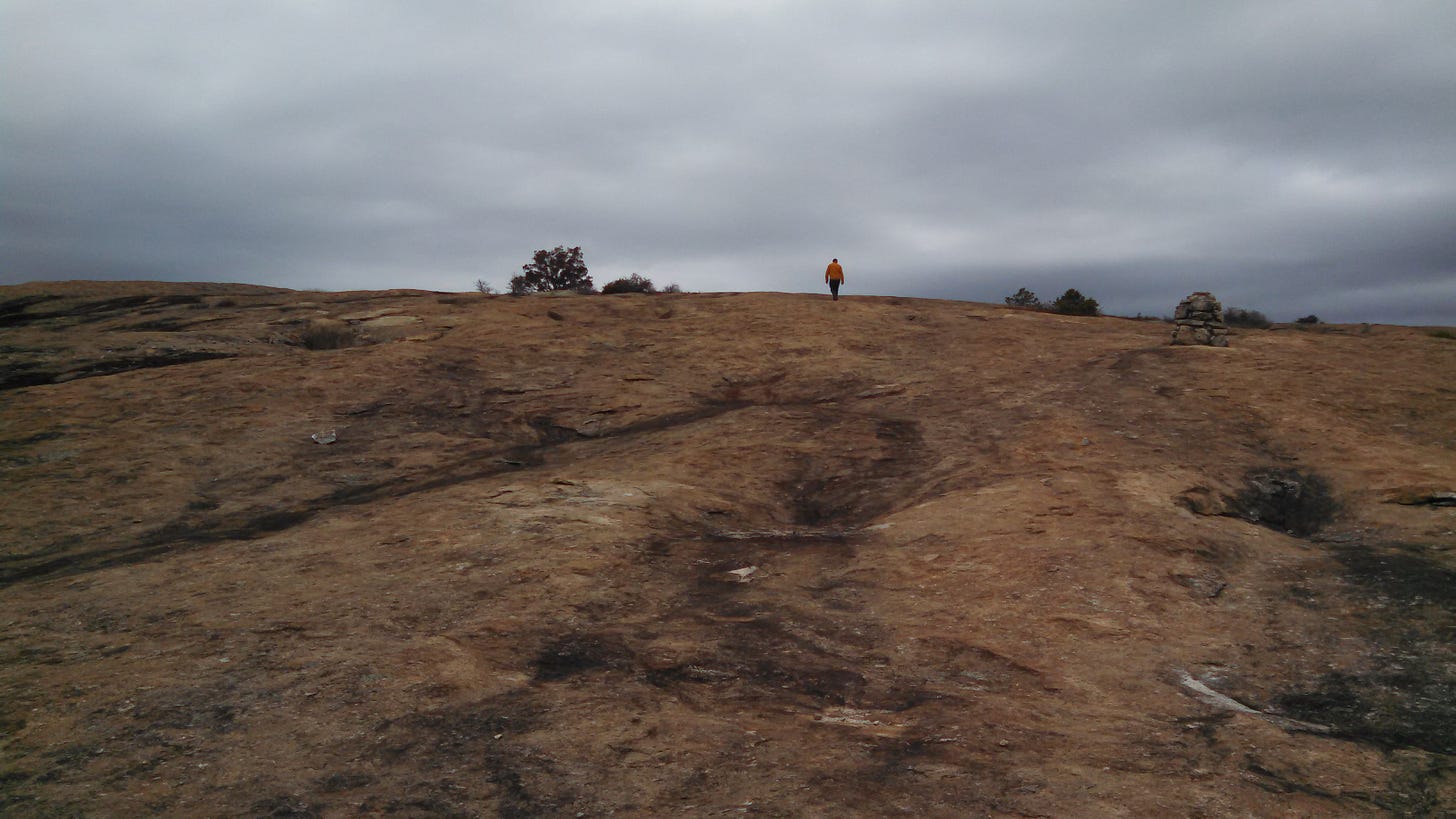
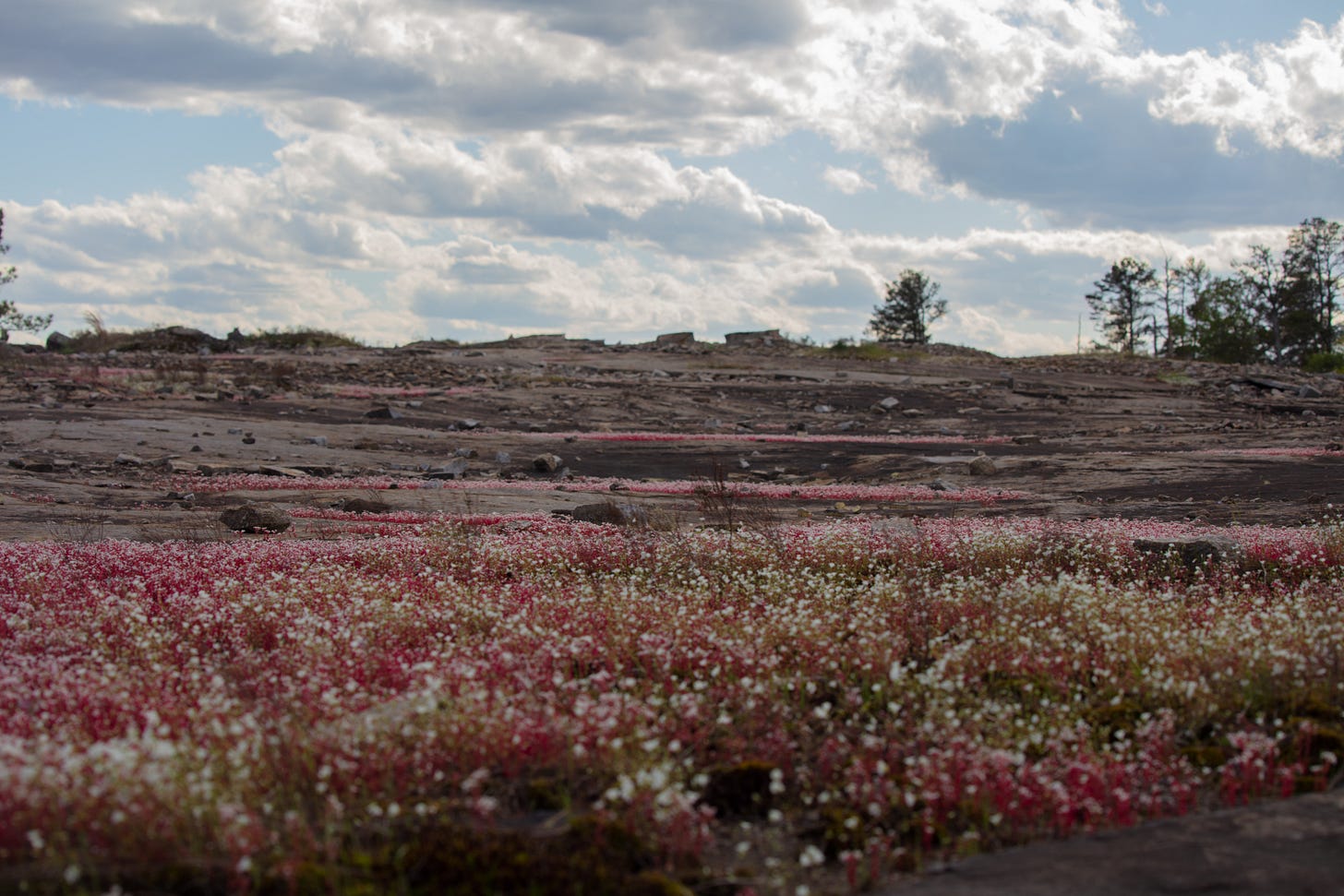

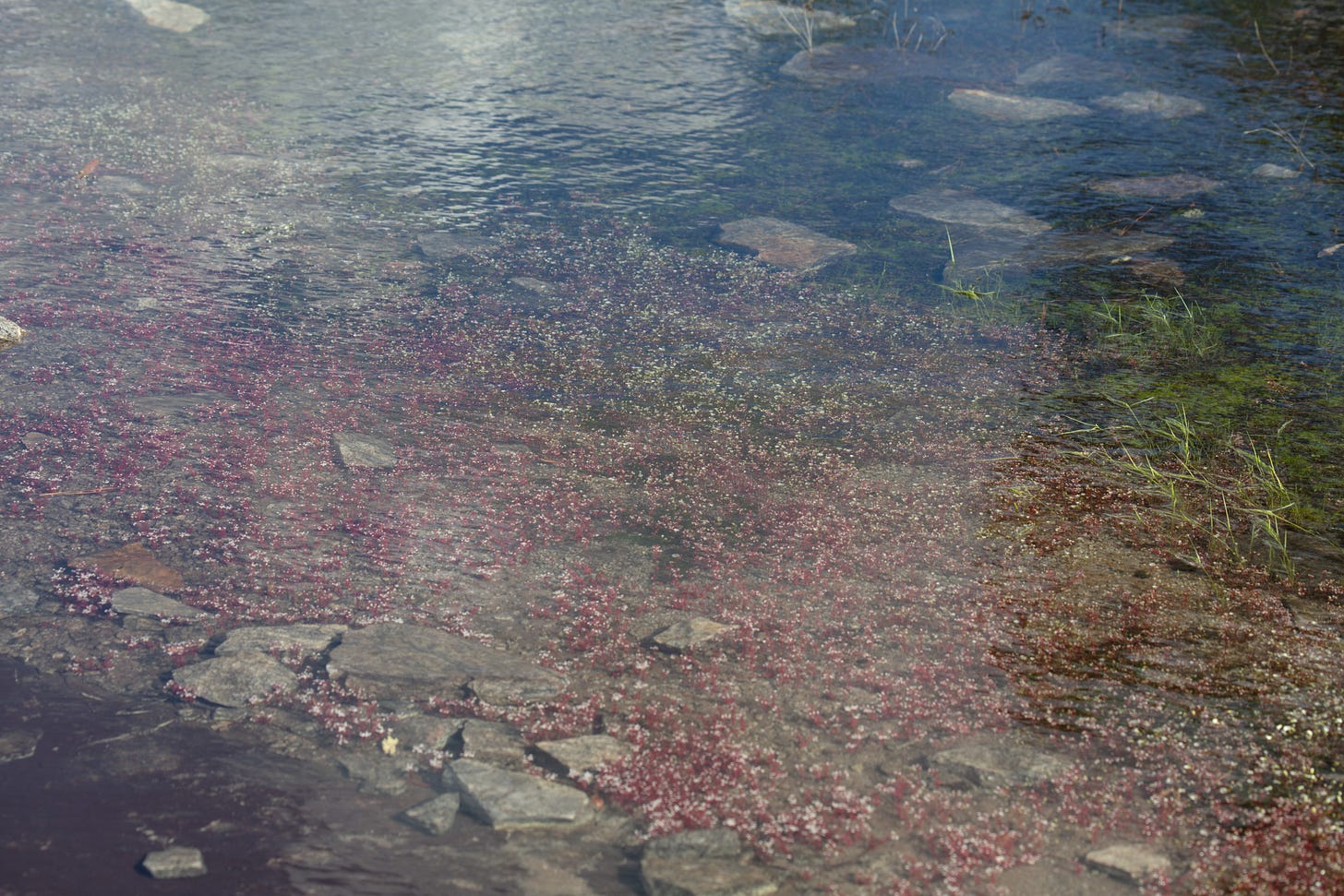
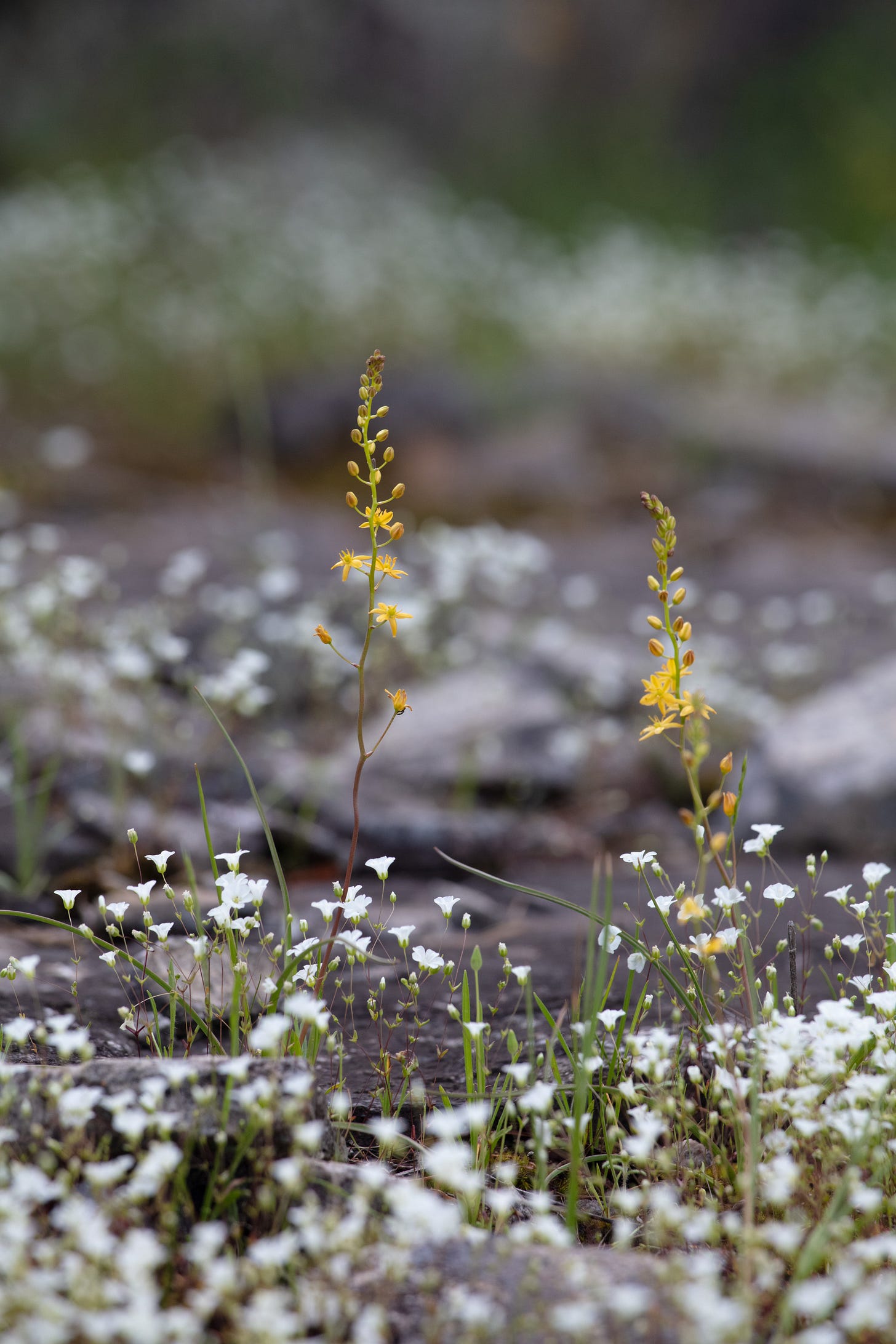

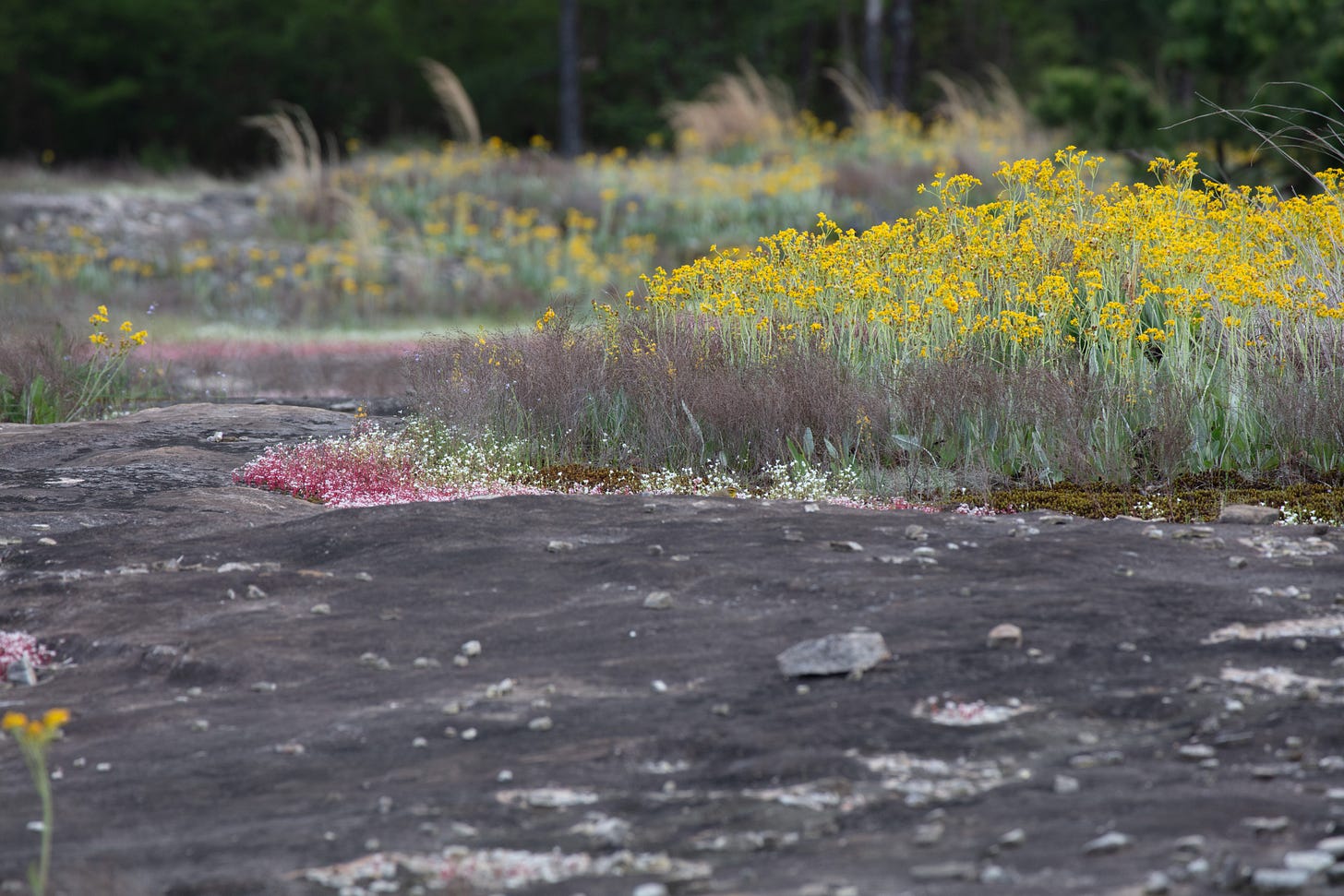
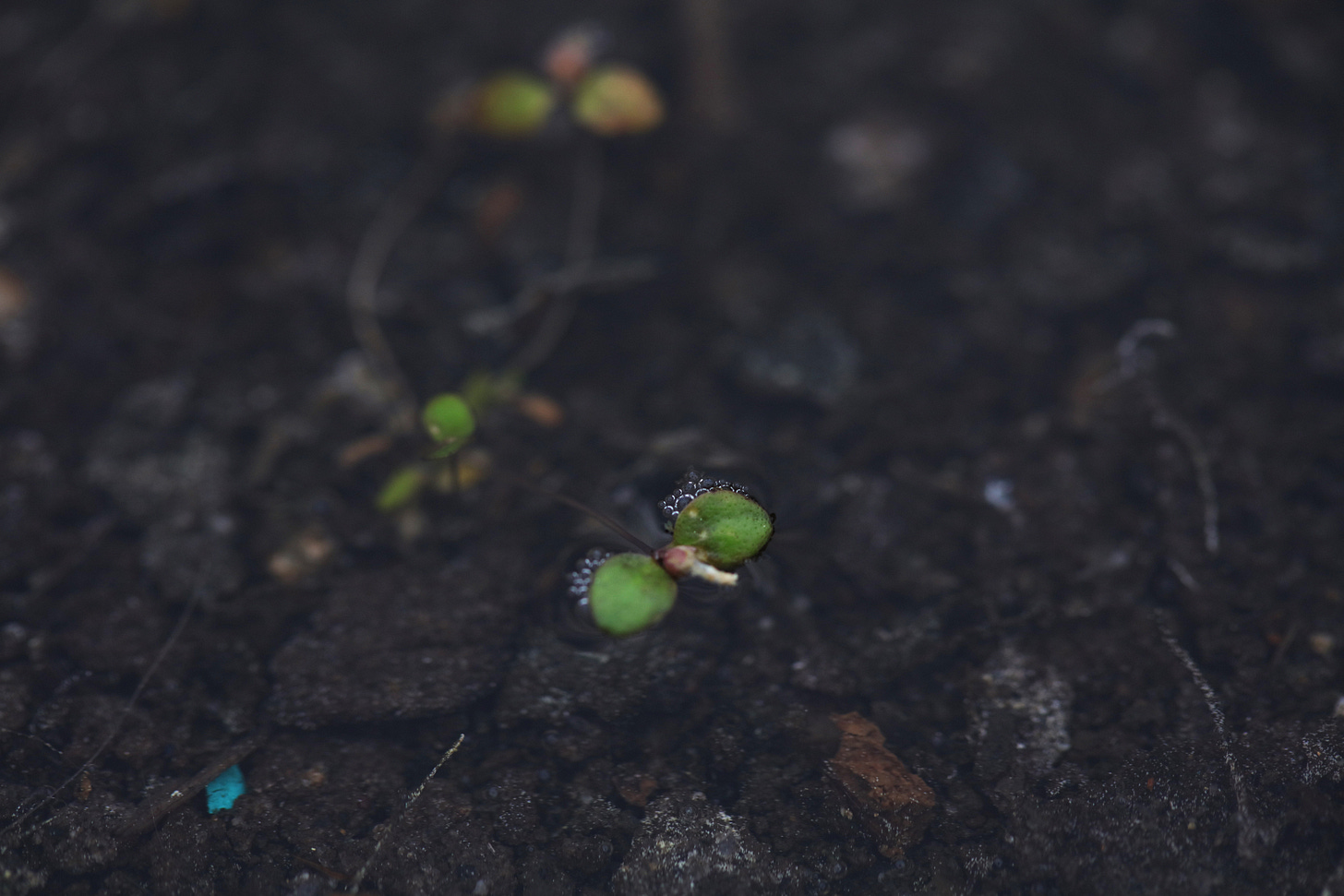

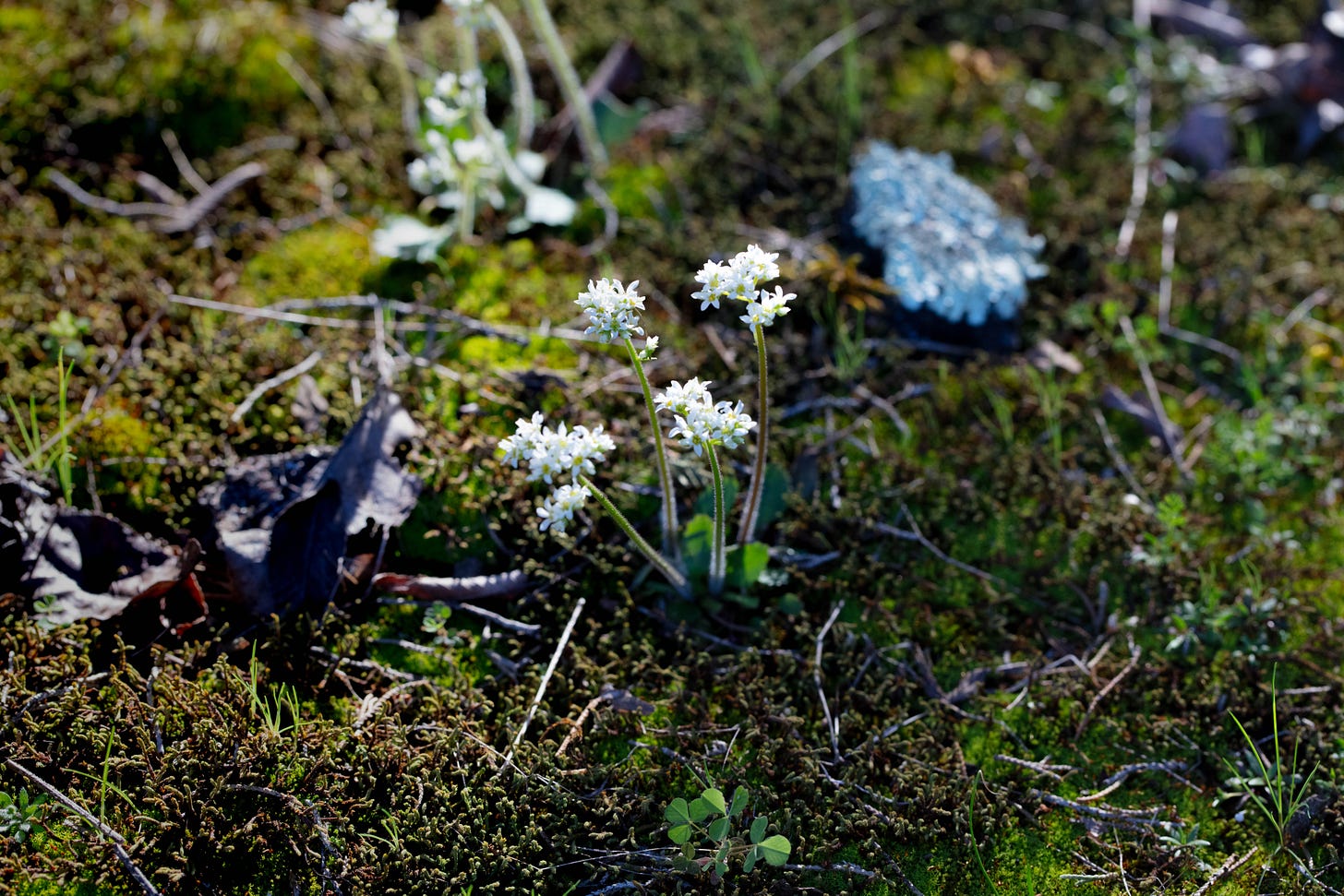
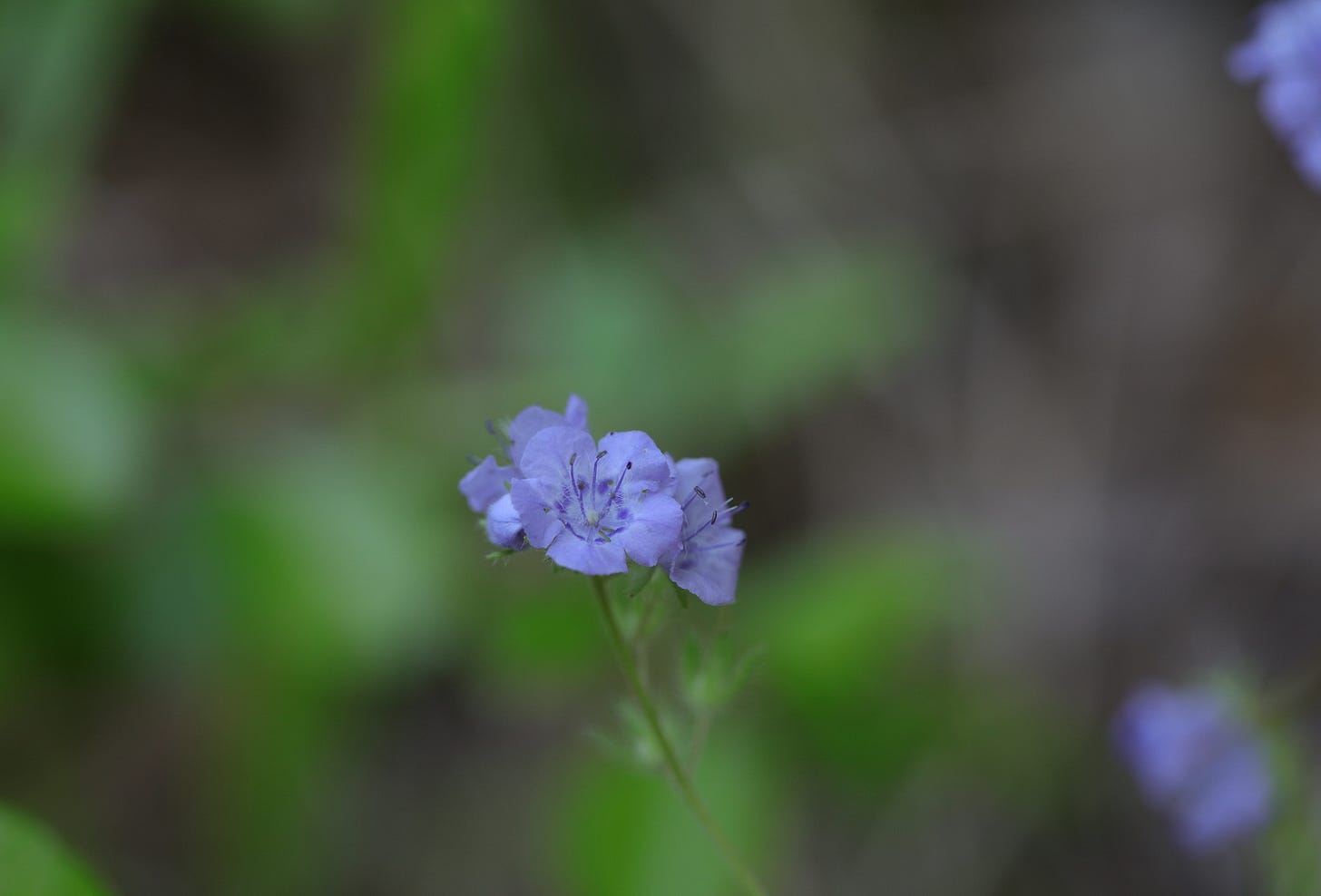
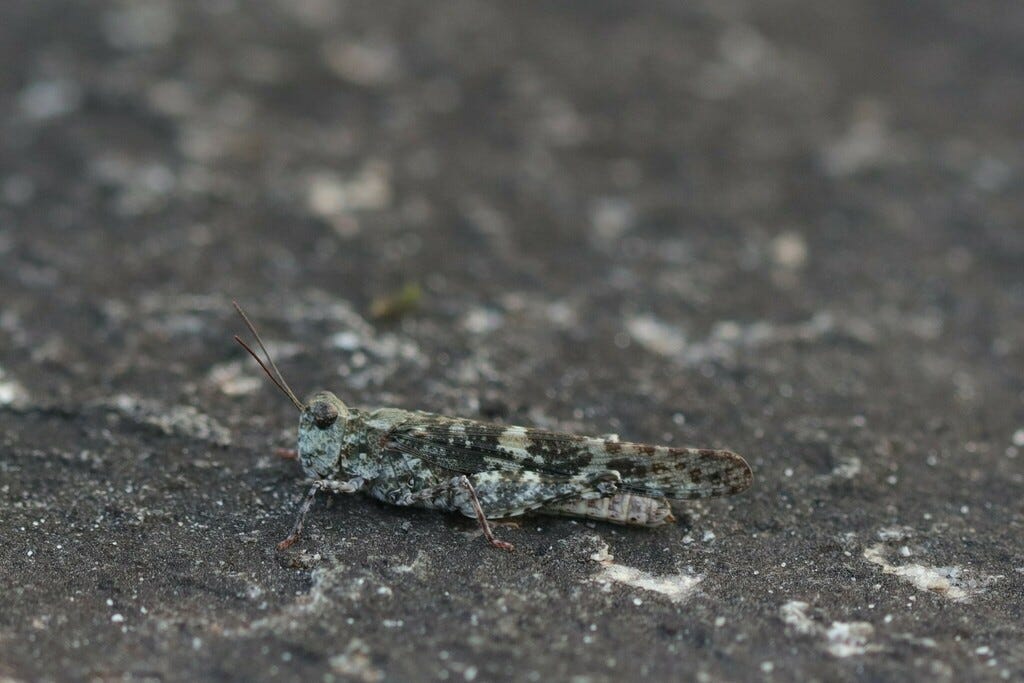

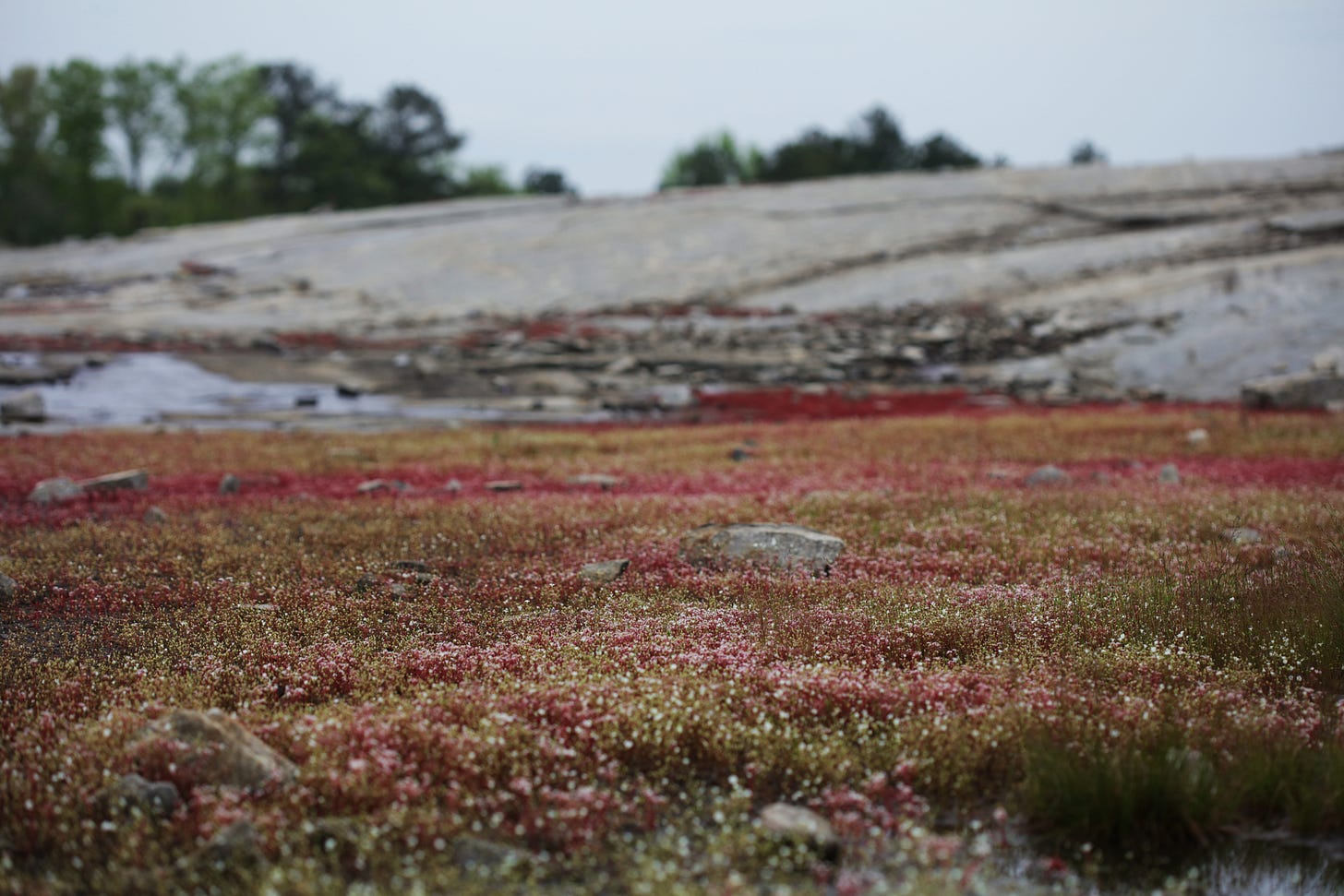
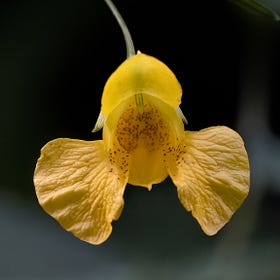
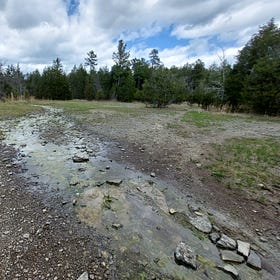
We have a couple spots like this in Texas, Enchanted Rock being the most well-known. I haven't been in more than a decade, a spectacular place! I had forgotten about Micranthes and had to recall (look-up on inat haha) which species we did have here, only one, M. texana, which occurs around Inks Lake in similar habitats as an isolated population and then mostly in a handful of hillside slopes in deep east Texas.
This is incredible! I hadn't even finished reading the essay before I set a calendar reminder for early next year to plan an April trip to Arabia Mountain. I absolutely adore tiny flowering plants that are surviving in rocky conditions.